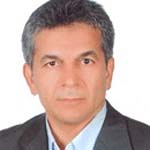Spatial prediction of soil classes using C5.0 boosted decision tree model Abyek Area
Author(s):
Article Type:
Research/Original Article (دارای رتبه معتبر)
Abstract:
Soil resource management is essential to maintain community production and the environment. Soil is usually used to produce agricultural products and livestock fodder. As a result, the mapping of high-resolution digital maps is crucial for the distribution of soil and soil properties and land management. The decision tree model is a widely used method for predicting soil class in digital soil mapping studies. This study aimed to provide a digital soil mapping in four levels of taxonomy using a decision tree with Boost-reinforced C5.0 algorithm using satellite data and digital Elevation Model and geological maps as environmental variables in 41,000 hectares of Abyek Area. This area was identified using randomized gridding of the geographic location of 128 soil profiles and then described, sampled, and classified. In this research, using the principal component analysis method on environmental variables, 20 environmental variables were selected as the representative of stacking factors for modeling. Multiresolution Valley Flatness Index is the most important environmental variable that was selected as input for the model. The results of the overall accuracy of the integrated model for predicting taxonomic levels of the Order, Suborder, great group, and subgroup were shown to be 89%, 85%, 58%, and 58%, respectively. The study also examined the effect of the boosting technique on the tree model, which showed that all taxonomic levels were better predicted by using the boost model than when no boosting was used and boosting resulted in an increase in overall accuracy and kappa coefficient It turned out.
Keywords:
Language:
Persian
Published:
Journal of Range and Watershed Management, Volume:75 Issue: 4, 2023
Pages:
553 to 572
https://magiran.com/p2557456
سامانه نویسندگان
مقالات دیگری از این نویسنده (گان)
-
Assessment of environmental indices for soil lead contamination in a part of Shahr-e-Ray, Tehran Province
Shahla Rahmani Siyalarz, Ali Keshavarzi *, , Mohsen Farahbakhsh
Iranian Journal of Soil and Water Research, -
Investigating soil grouping using conventional and modern clustering models in some parts of Qazvin plain
Zahra Rasaei, *, Azam Jafari
Iranian Journal of Soil and Water Research,


